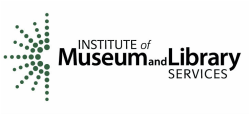Picture Book Bibliography
Physical Science: Force and Motion
Non-Fiction
Forces Make Things Move. Kimberly Bradley.
Basic information about how things move.
Forces and Motion. Angela Royston.
“No matter how high I throw a ball it will always come down to me and my pup.”
Give It a Push! Give It a Pull!. Jennifer Boothyard.
A look at forces for grades 1 and 2.
I Fall Down. Vicki Cobb.
Simple experiments introduce the concept of gravity and its relationship to weight.
Motion. Ellen Lawrence.
Experiments using household objects.
Motion: Push, Pull, Fast, Slow. Darlene Stille.
Explores the concepts of motion.
Move It! Adrienne Mason.
Facts and hands-on activities appropriate of ages 4-7.
Roll, Slope and Slide. Michael Dahl.
A book about ramps.
Fiction
And Everyone Shouted “Pull.” Claire Llewellyn.
A first look at force and motion.
Gigantic Turnip. Aleksei Tolstoy.
A retelling of the folktale about a farmer whose turnip is impossible to pull from the ground. (Also: The Giant Carrot, The Enormous Potato, The Giant Cabbage)
Newton and Me. Lynne Mayer.
A rhyming picture book that brings physics to preschool. Forces and motion in everyday life.
Oscar and the Cricket: A Book About Moving and Rolling. Geoff Waring.
A book about moving and rolling.
Maggie's Ball. Lindsay Barrett George.
Maggie is looking for someone to play ball with her.
Roller Coaster. Marla Frazee.
A delightful introduction to motion and forces.
Sheep in a Jeep. Nancy E. Shaw.
This rhyming book is ideal for simplifying the topic of force and motion. Physical Science Force and Motion Fiction
Inquiry Science
Non-Fiction
How to Think Like a Scientist. Stephen Kramer.
What is a Scientist? Barbara Lehn.
Simple text and photographs depict children engaged in various activities that make up the scientific process.
Fiction
Zoom. Istvan Banyai.
Nothing is ever as it seems in this wordless book of pictures within pictures. Gives students a fun way to practice the scientific skills of observation, inquiry, and prediction.
Counting on Frank. Rod Clement.
This is a story about a boy who likes to ask questions about the ordinary things around us.
Up, Up in a Balloon. Lawrence Lowery.
Fiction stories about exploring with science practices.
How Big is a Foot? Rolf Myller.
How Many Seeds in a Pumpkin? Margaret McNamara.
Just a Little Bit. Ann Tompert.
When an elephant and a mouse try to play on a seesaw, they need help from a vast number of animal friends to balance the scales.
Seven Blind Mice. Ed Young.
Illustrates the importance of making careful observations and collecting evidence to develop explanations.
Investigating Balls: Starting With a Story
The Secret History of Balls: The Stories Behind the Things We Love to Catch, Whack, Throw, Kick and Bounce. Josh Chetwynd.
Trivia about balls. Fun to share with both children and adults.
The Great Fuzz Frenzy. Susan Crummel and Janet Stevens
Round Like a Ball. Lisa Ernst
Balls. Melanie Jones
A Ball for Daisy. Chris Raschka
Ball. Mary Sullivan
Watch Me Throw the Ball. Mo Willems
Problem Solving
The Day-Glo Brothers: The True Story of Bob and Joe Switzer's Bright Ideas and Brand-New Colors. Chris Barton.
One day two brothers began experimenting with ultraviolet light and fluorescent paints. The result was a whole new kind of color, one that glows with an extra-special intensity—Day-Glo.
Galimoto. Karen Lynn Williams.
A young boy in Malawi is determined to make a galimoto (a push toy made of wire).
The Glorious Flight. Alice and Martin Provensen.
A biography of the man who designed the first heavier-than-air machine to fly across the English Channel.
The Most Magnificent Thing. Ashley Spires.
Making a magnificent thing is not easy, as one little girls tries and tries again.This story shows how a new perspective can help in solving a problem.
Papa’s Mechanical Fish. Candace Fleming.
Based on the real life of inventory Lodner Phillips. Highlights an inventor's perseverance, inspiration and cooperation with others.
POP! The Invention of Bubble Gum. Meghan McCarthy.
A picture book biography of the history and invention of bubble gum.
Rosie Revere, Engineer. Andrea Beaty.
Rosie is always trying to solve problems with her inventions. She learns that creativity requires deliberate thought and perseverance.




